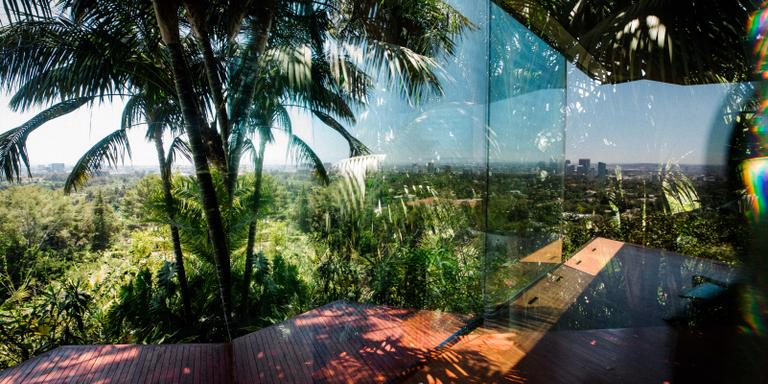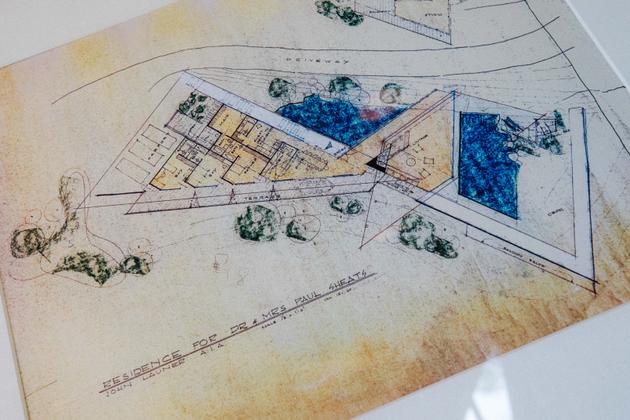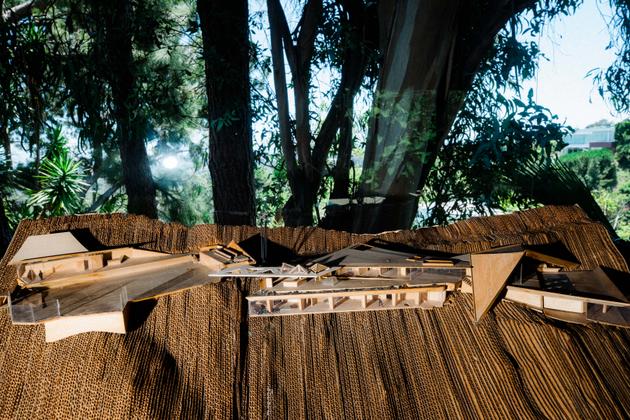


The Sheats-Goldstein Residence, a modern gem for Hollywood's rich and famous
Series'Los Angeles, an architect's dream' (4/6). The spectacular house, designed by American architect John Lautner, is constantly being remodeled by its current owner. Similar buildings, which are the pride of the city, have little protection.
High above the upscale Beverly Hills district, a house attached to rock soars above the landscape. The house's angular shell, open like a large bird's beak, embraces the entire Los Angeles skyline. There's no boundary between the inside and outside, just a bay window that can be operated remotely. There are no railings at the end of the terrace – there is nothing that could possibly hinder the exhilarating feeling of floating in the sky above this flat expanse, barely disturbed by the small outgrowth of the towers of Bunker Hill, the financial district, in the distance.

Greenery is everywhere: In the open-air bathroom, in the pond that runs alongside the entrance to the house, and along the rock it backs onto, where frogs splash between the water lilies. Daylight seeps in through the cracks all the way to the bottom of the cave, where sun rays rain down on benches from small holes drilled in the ceiling.
This is the Sheats-Goldstein Residence, one of Los Angeles' most striking modern homes. It was designed in 1963 by John Lautner (1911-1994), a student of Frank Lloyd Wright (1867-1959), the architect of New York's Guggenheim Museum, who helped establish the city of movies as one of the 20th century's most fascinating experiment with form. The house owes its fame to Julius Shulman's (1910-2009) photographs, a local artist who glorified so many masterpieces of modern architecture. But it's also famous thanks to the Coen brothers, who, in The Big Lebowski (1998), made it the home of a pornographer played by Ben Gazzara. Snoop Dogg, Pharrell Williams and many rappers, who have shot music videos there, and many fashion photographers, have also turned the house into a veritable pop culture icon.
Futuristic and organic
This isn't Lautner's first starlet home. The Chemosphere, built in 1960 on the 45-degree slope of a Hollywood hill, plays a starring role in Brian De Palma's Body Double (1984). The panoptic structure, which looks like a flying saucer resting on a 9-meter concrete pillar, was designed to provoke the main character's paranoia. A few years earlier, the Elrod House (1968) in Palm Springs, California, hosted an epic battle between James Bond and two model-like gymnasts in Guy Hamilton's Diamonds Are Forever (1971).


Futuristic and organic at the same time, Lautner's architecture combines modern materials, concrete in particular, with the trees and rocks of LA's landscape. It integrates avant-garde forms, technological gadgets and local elements. Lautner called this "free architecture." With his Sheats-Goldstein Residence, he unwillingly changed the concept. At the request of James Goldstein, a businessman who had bought the house from the Sheats family in 1972, the architect embarked on a transformation process in the early 1980s that was to never end: Even after his death in 1994, the transformation continued without him.
You have 68.23% of this article left to read. The rest is for subscribers only.
